What is Link Counter?
The Website Internal Link Counter by Sitechecker is a tool designed to determine the total number of URLs on a site or page and offers a range of features for URL analysis. It is beneficial in identifying which URLs from your XML Sitemap are indexed by Google search engines and detecting any errors in your website’s hyperlinks.
The tool can help you by
Total URL Count: It calculates the total number of URLs on your website (internal, external, nofollow, and dofollow links)
Link Analysis: It identifies internal and external URLs on your site and page that are indexed by Google search engines.
Error Detection: It detects any errors present in your website’s hyperlinks.
The key features of Tool
Unified Dashboard: Provides a central, comprehensive view of your website’s SEO performance and metrics, making it easier to monitor and analyze data.
User-friendly Interface: Designed for ease of use, ensuring that even users with limited technical expertise can navigate and utilize the tool effectively.
Complete SEO Toolset: Offers a wide range of SEO tools, covering various aspects such as analysis, keyword research, site audits, and performance tracking, making it a versatile solution for SEO needs.
How to Use the Link Counter Tool
There are two approaches to counting links from a website: using the domain method or checking a specific page. Opt for the domain method to count all URL addresses from a website and check for any URL address issues. Alternatively, the URL method is ideal for analyzing a particular page, capturing all its URL addresses and related data, such as status codes. Simply select the method that meets your needs, enter the domain or URL, and click “ Get all links”
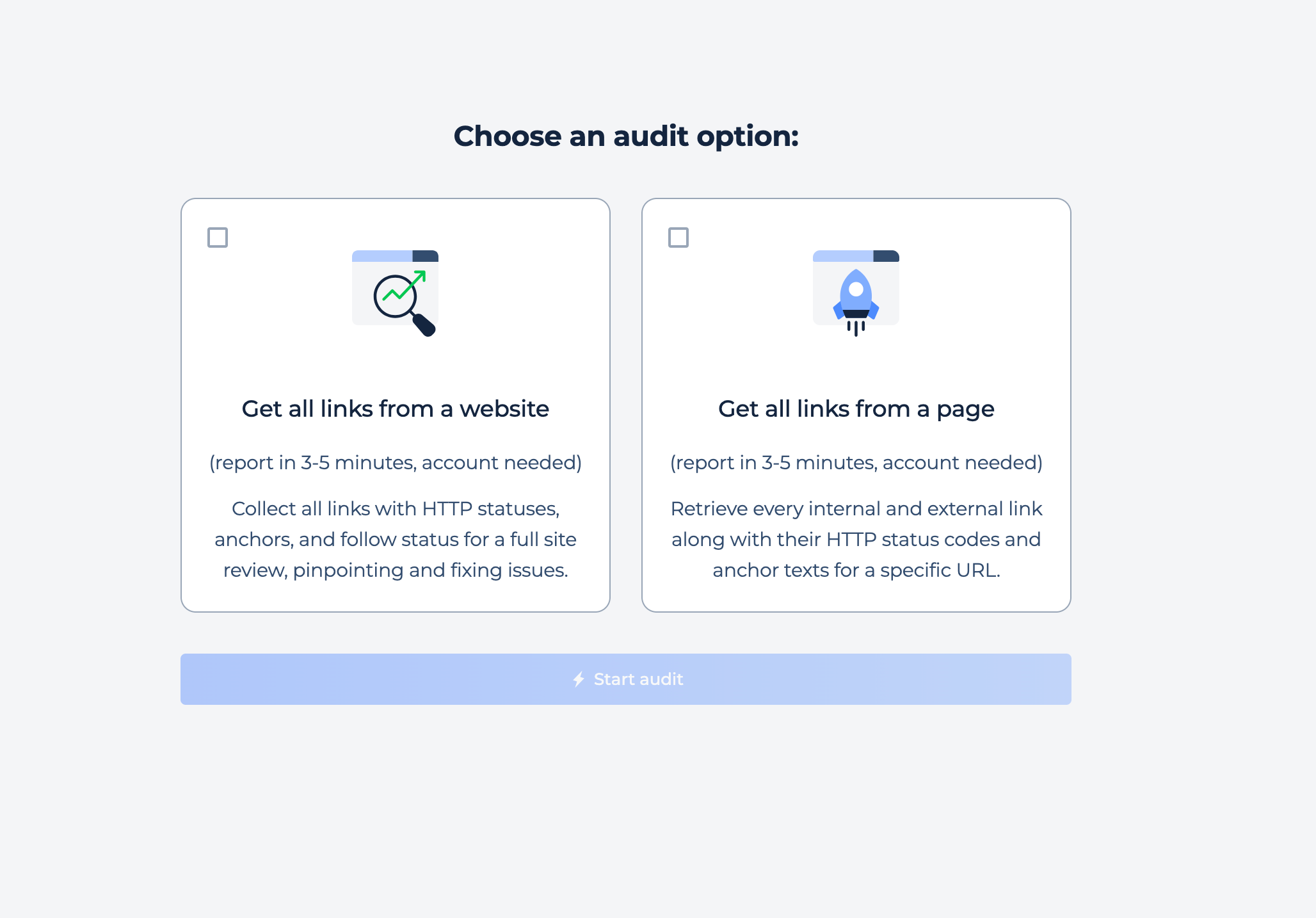
Domain Check
Step 1: Select the domain option, input the domain you wish to analyze, and press the “Get all links” button
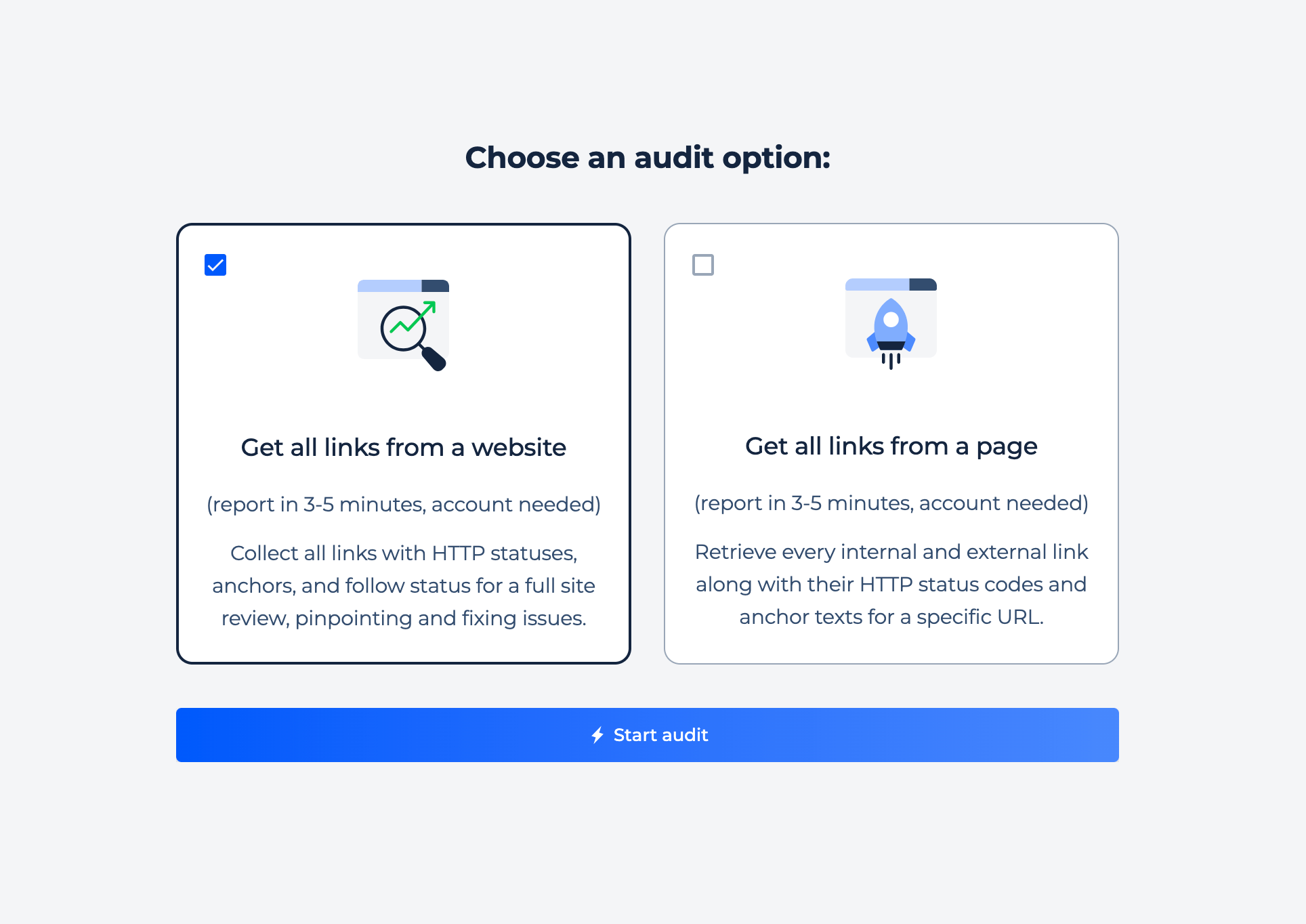
Step 2. Results
The Link Counter is adept at pinpointing various hyperlink issues, such as orphan and inadequate internal URLs. It quantifies critical issues and provides a clear count of warnings and opportunities for improvement. By categorizing affected pages, it helps you prioritize SEO-related fixes, enhancing your website’s URL address structure and search engine visibility.
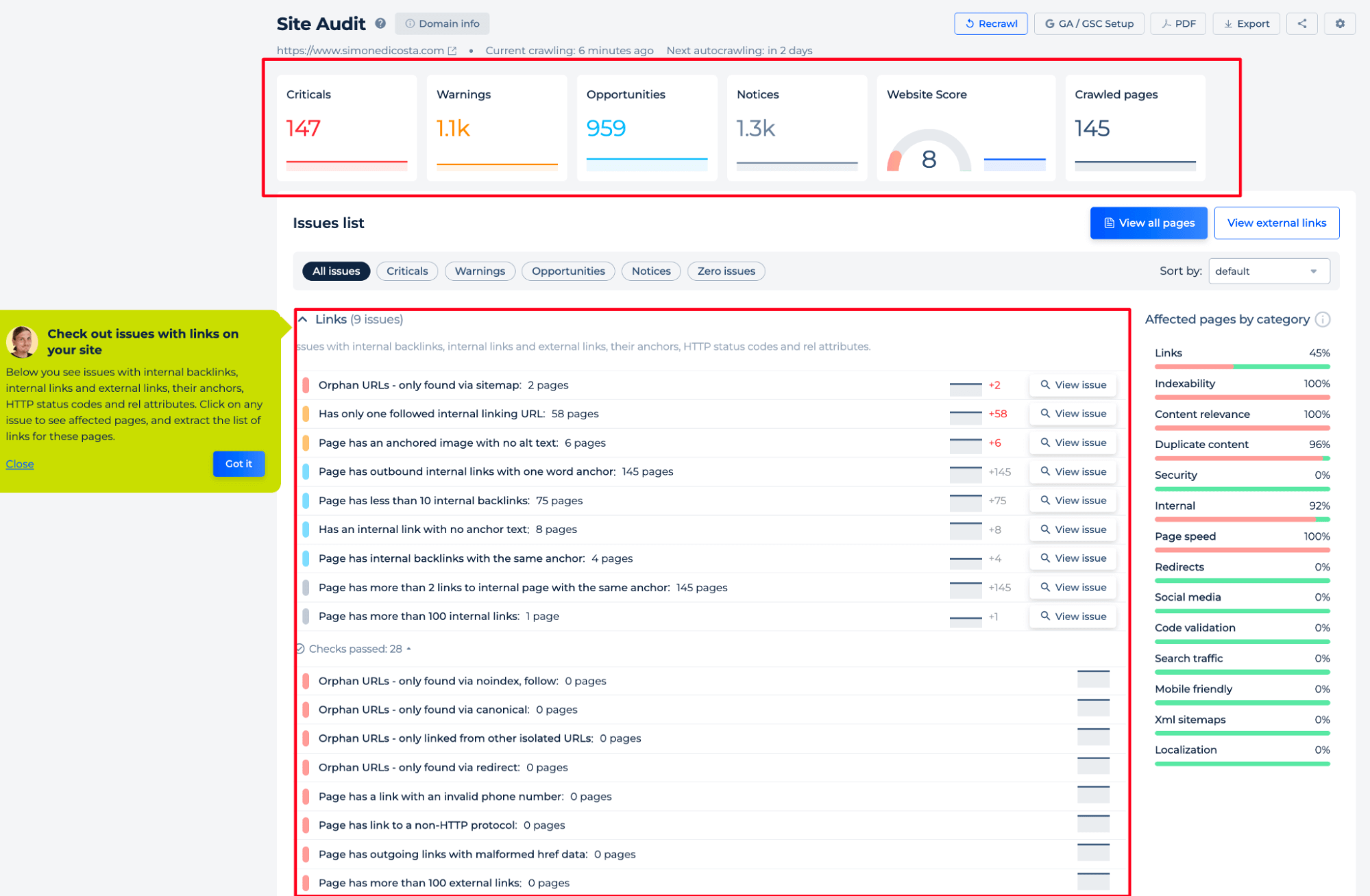
On the All Pages screen, you’ll find the total count of your site’s pages, a list with all pages, their response codes, and page weight values.
Within the Link Counter tool, the “All HTML pages” feature displays a comprehensive list of all pages on your site that have been crawled.
For each page, the tool provides detailed metrics such as the count of external, incoming, and internal hyperlinks. This allows you to assess your site’s hyperlink address structure systematically and make informed decisions for SEO and site health maintenance.
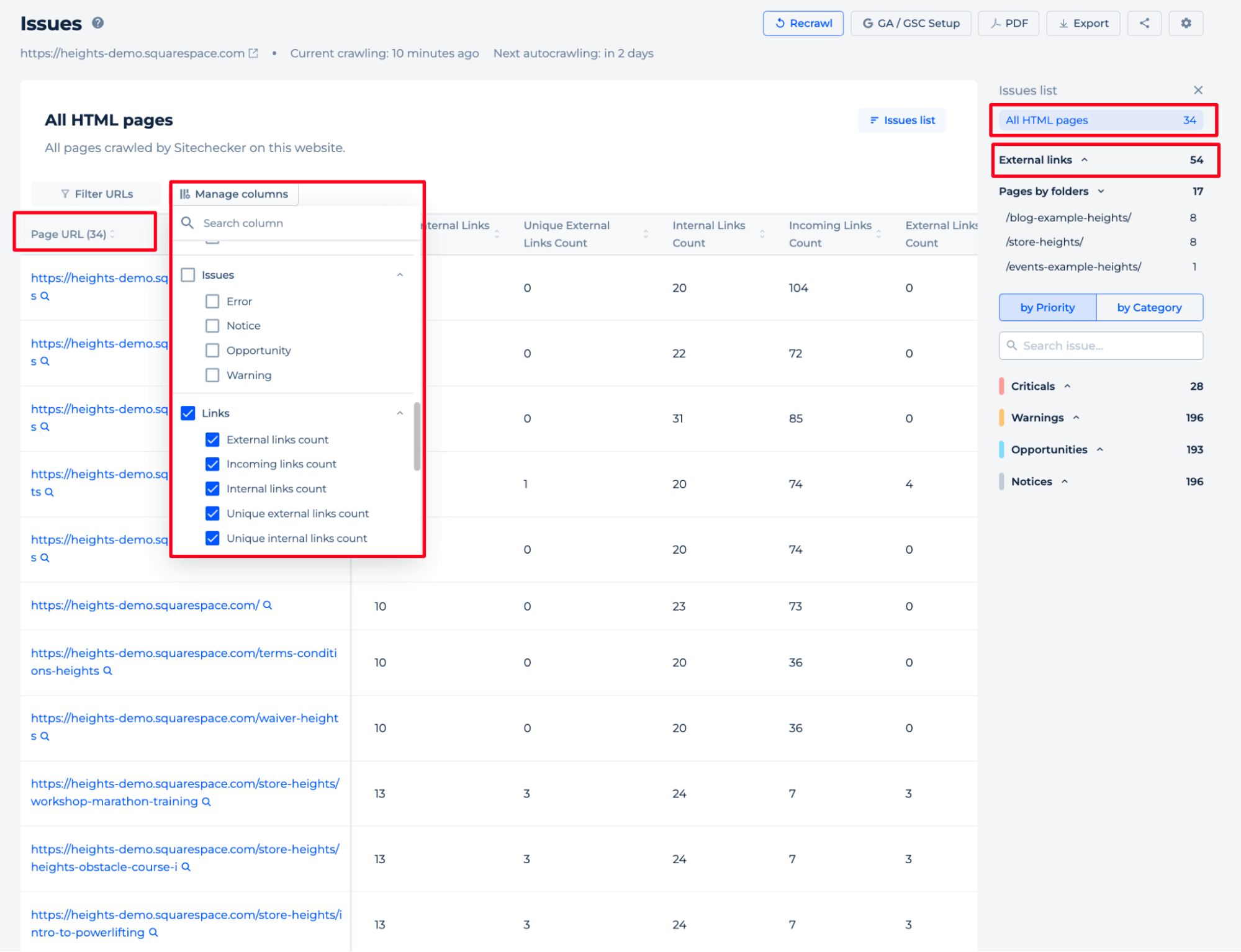
Additional features of the domain verification
The “Page details” feature of the Link Counter tool provides an in-depth analysis of internal URLs for a specific page on your website. It lists each internal link found on the selected page, along with its status code and whether it is marked as “dofollow” or “nofollow” for search engine crawlers. This section allows you to monitor the connectivity and SEO-friendliness of your internal page address structure, ensuring that important pages are accessible and that page value is being passed effectively throughout your site.
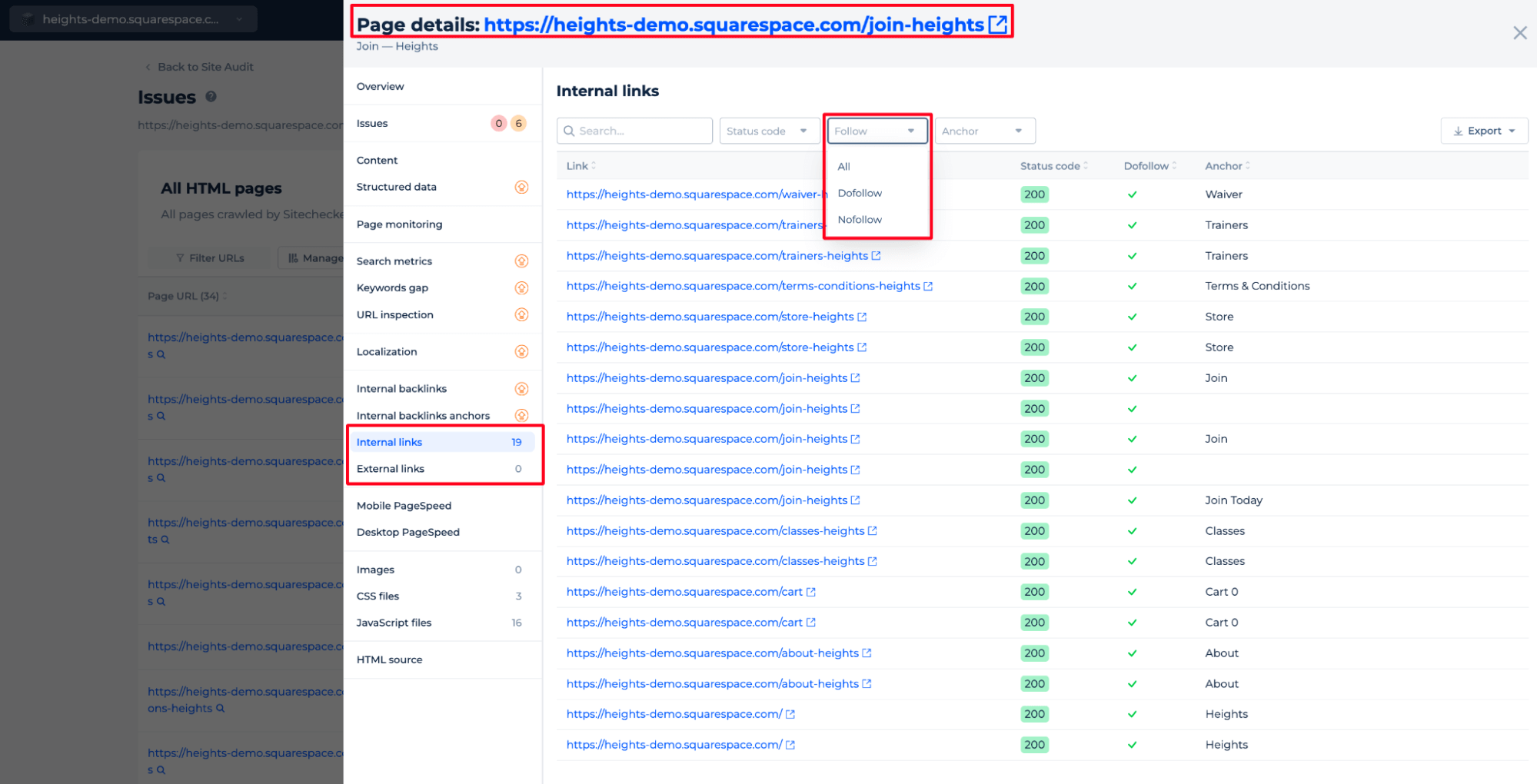
Page Check
Click the “Check page” button to initial the one-page analysis
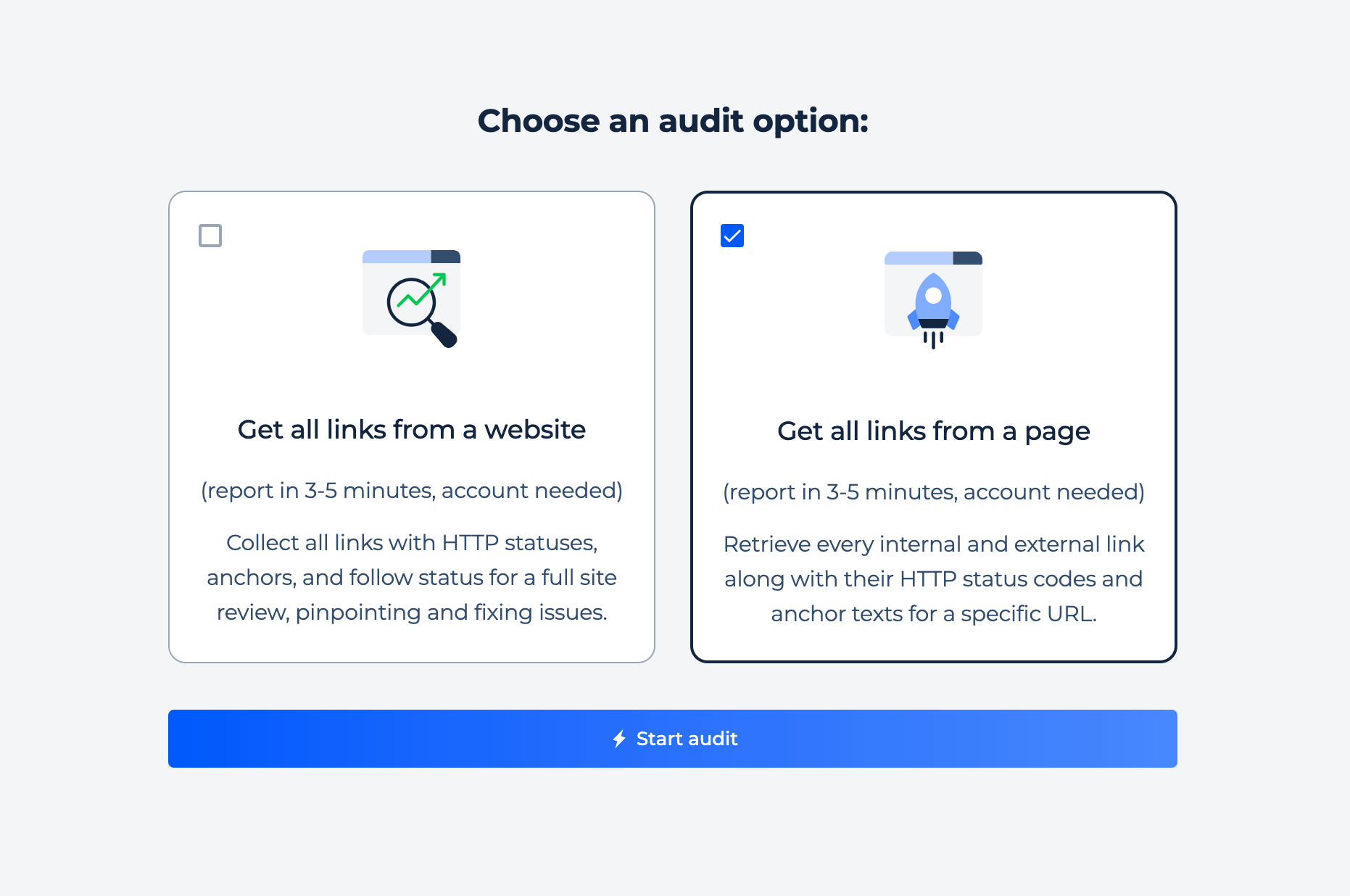
Page Link Counter tool presents a structured overview of a specific URL. It identifies external URL addresses, which are those that lead to other websites, along with their respective URLs, anchor texts, and HTTP response codes, ensuring you can verify that these page addresses lead to active, relevant pages.
Meanwhile, it also details internal URLs, encompassing all navigational elements within your site. This includes the URLs and the texts used to link, alongside their status codes to confirm their operational integrity.
Additionally, the tool highlights subdomain URLs, providing insights into how your main domain’s subdomains are interconnected. It displays the URL and the descriptive anchor text for each page address, as well as their response codes, giving a clear picture of the health and structure of your broader website network.
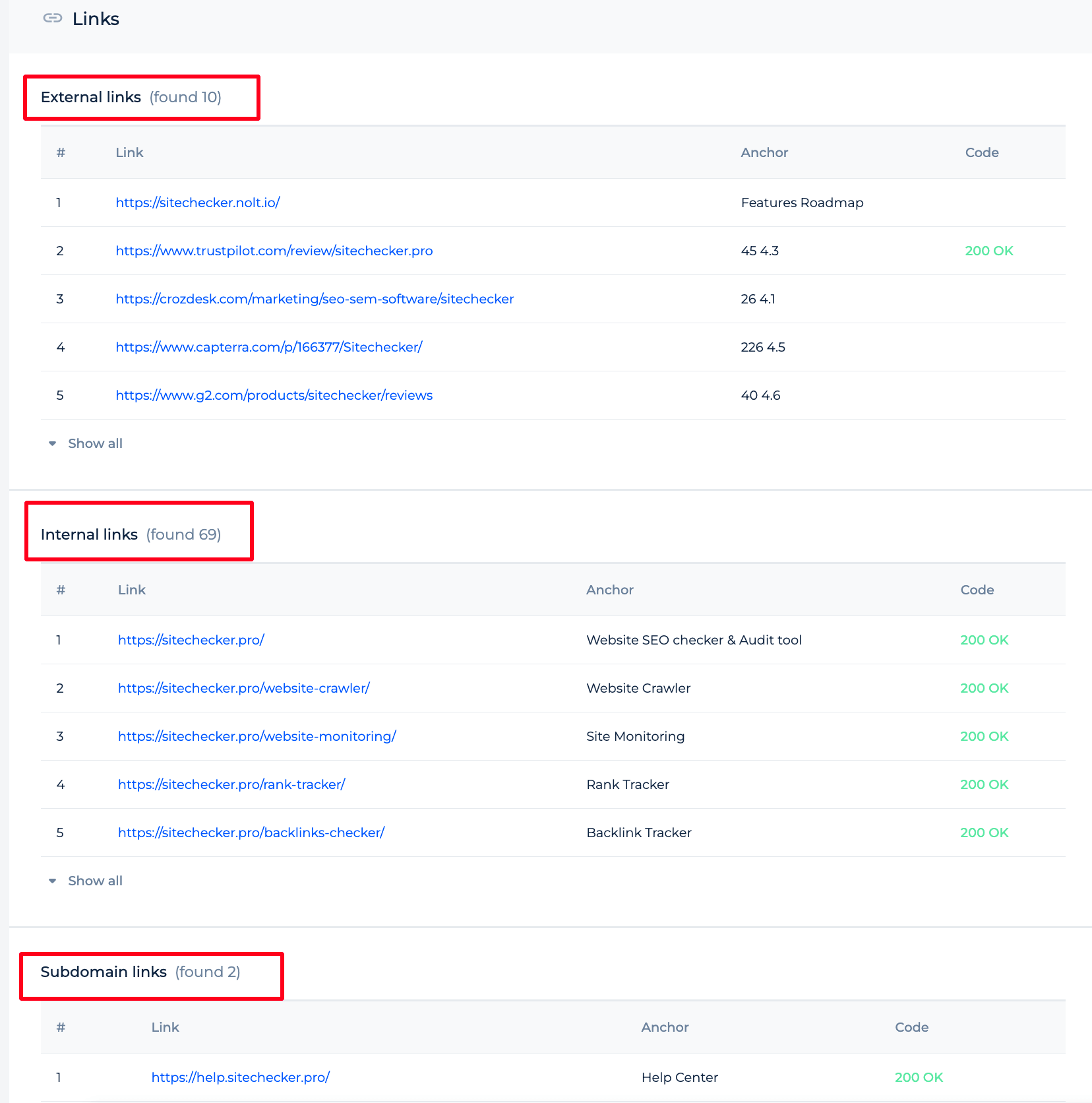
Remember that auditing a single page might not greatly enhance your website’s SEO. For a comprehensive evaluation, select “Run a full website audit.” This option is detailed in the initial part of our manual, explaining the data you’ll receive from a full site inspection.
Additionally, visit the “Site Audit” section to initiate our demo project. This will allow you to experience the tool’s full capabilities and gain essential insights into your website’s performance.
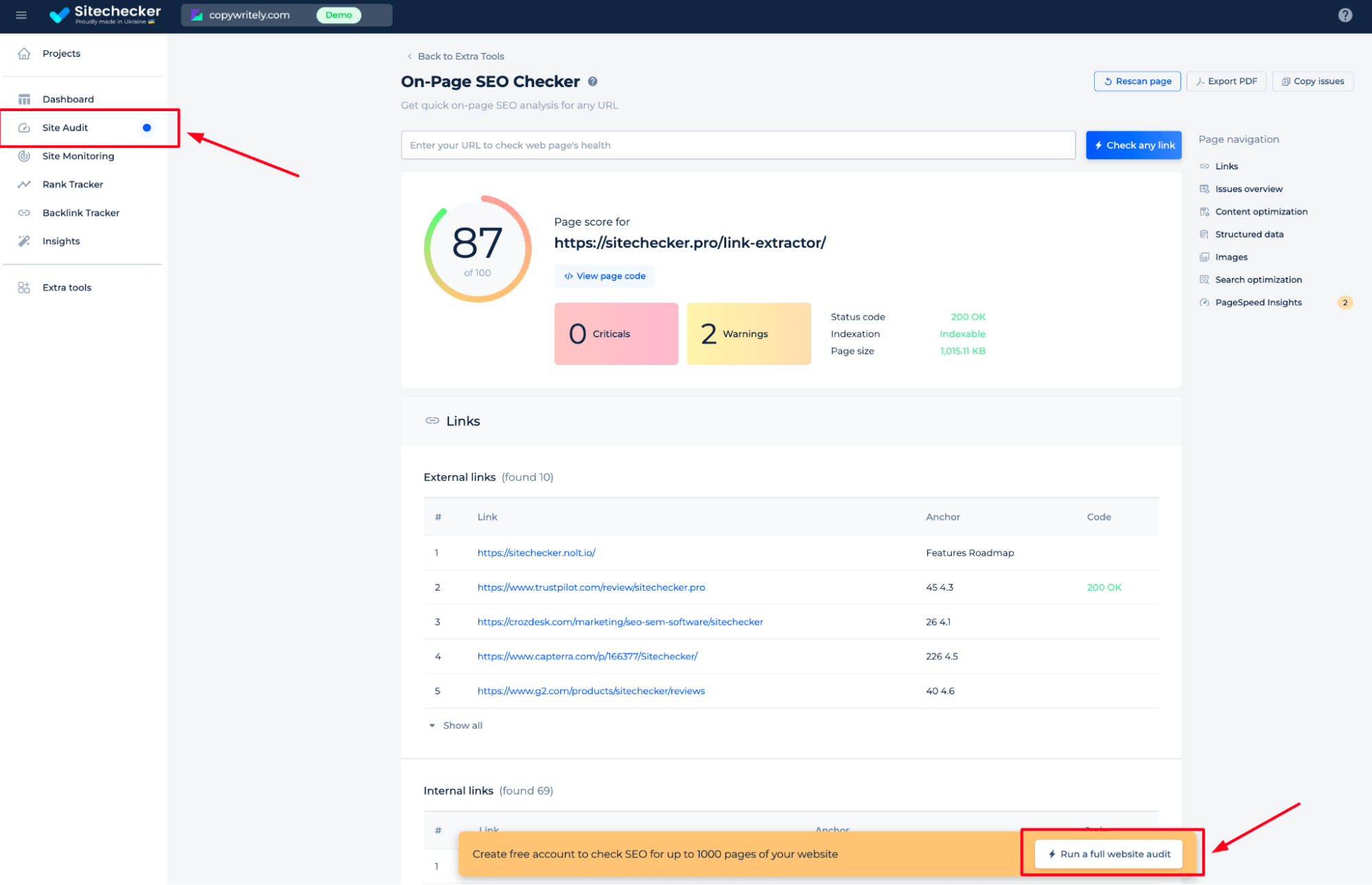
Additional features of Page Link Counter checking
The “Page details” feature of the Link Counter tool provides an in-depth analysis of internal URLs for a specific page on your website. It lists each internal link found on the selected page, along with its status code and whether it is marked as “dofollow” or “nofollow” for search engine crawlers. This section allows you to monitor the connectivity and SEO-friendliness of your internal page address structure, ensuring that important pages are accessible and that page value is being passed effectively throughout your site. Additionally, using the Page Counter tool, you can keep track of the total number of pages on your website, helping to maintain a well-organized structure and ensuring that all pages are properly indexed and optimized for search engines
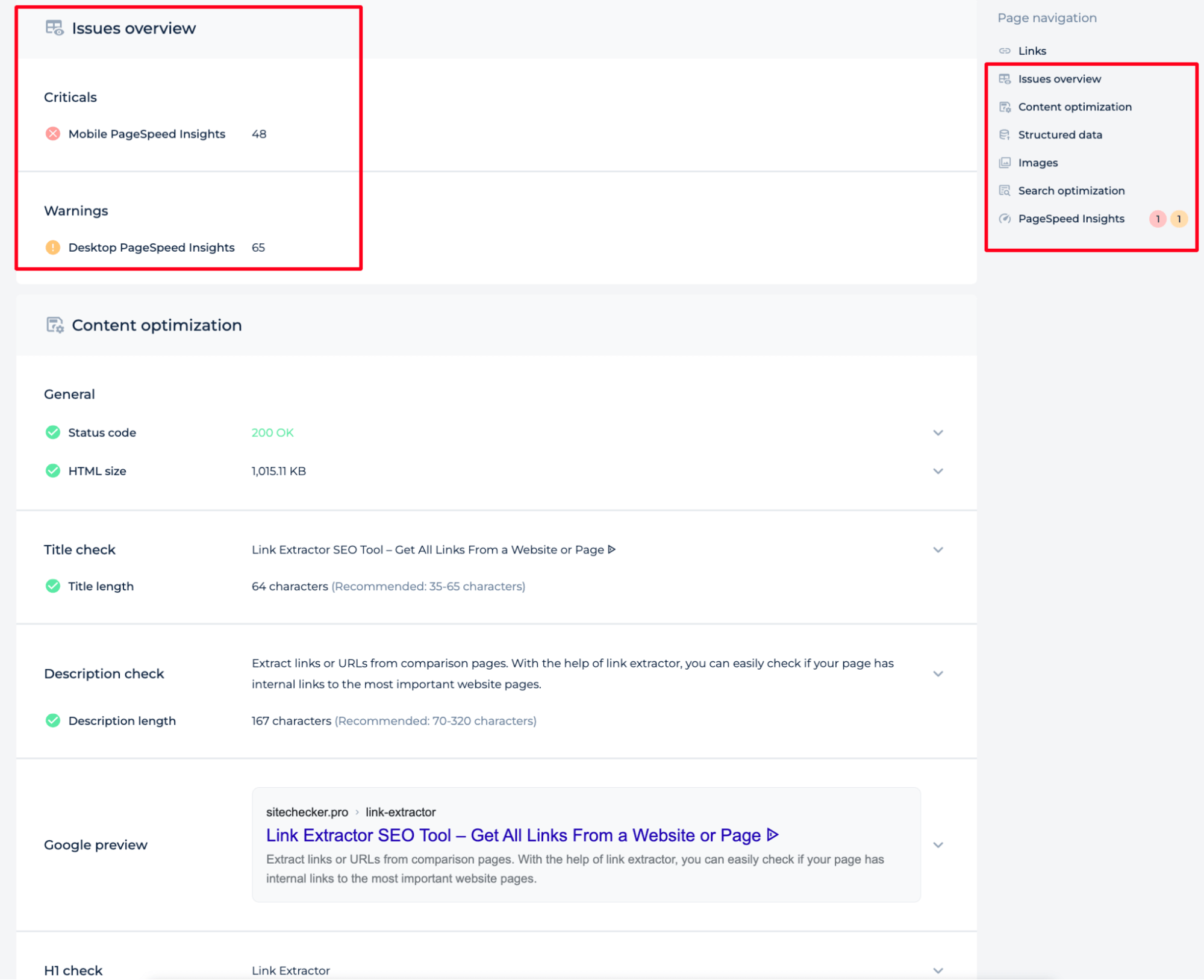
Final Idea
Website Link Counter Checker emerges as an indispensable tool for any webmaster looking to enhance their website’s SEO. By offering a thorough analysis of URLs, including total URL count, link analysis, and error detection, it provides a robust platform for optimizing your site’s link structure. Its user-friendly interface, unified dashboard, and complete SEO toolset empower users to conduct comprehensive site audits, track performance, and make informed decisions.











